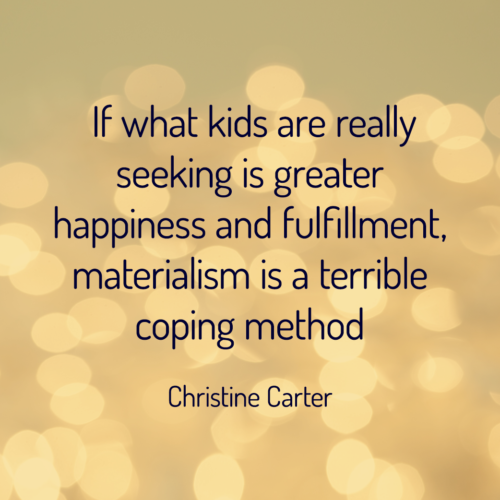
“If what kids are really seeking is greater happiness and fulfillment, materialism is a terrible coping method.” –Christine Carter, Making the Holidays More Meaningful – and Less Materialistic
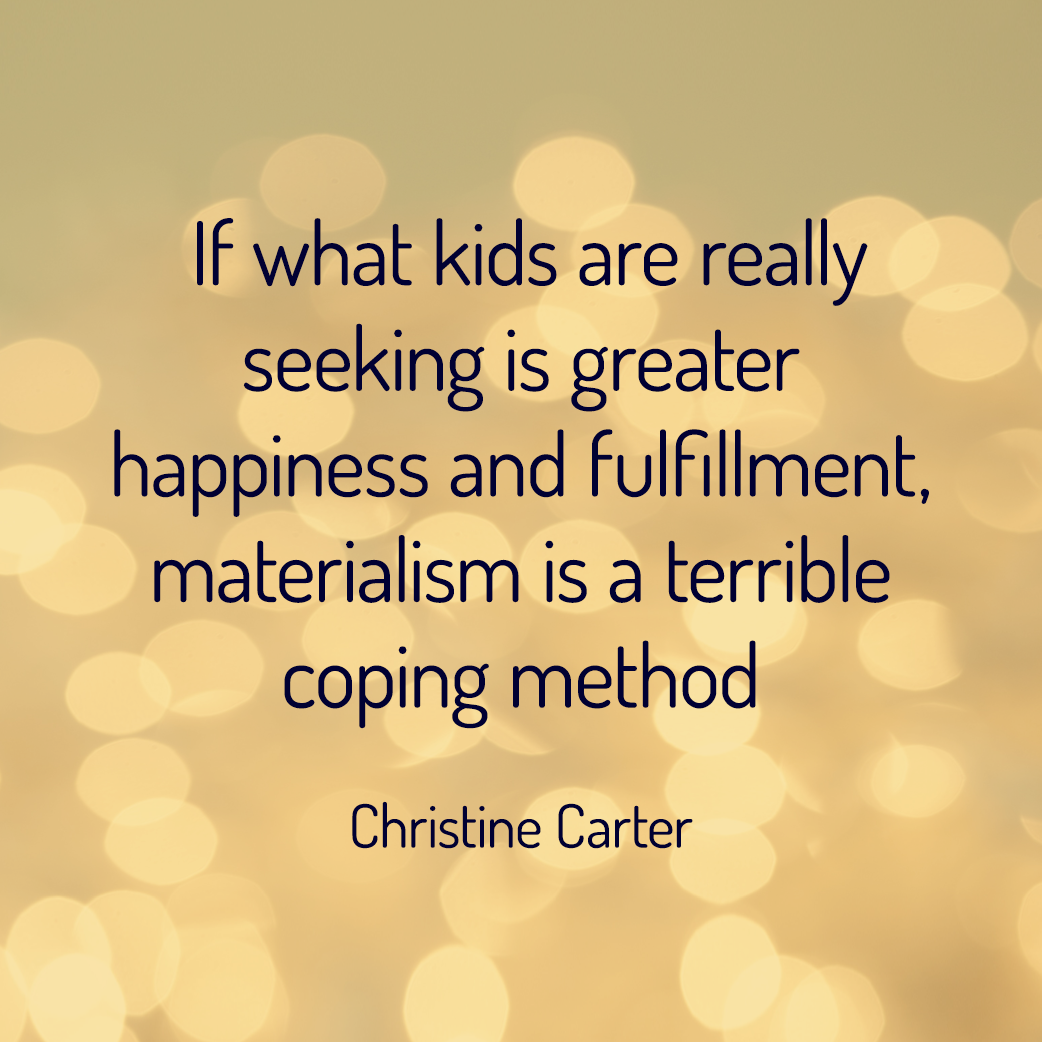

“If what kids are really seeking is greater happiness and fulfillment, materialism is a terrible coping method.” –Christine Carter, Making the Holidays More Meaningful – and Less Materialistic

Last year about this time, an Instagram photo showing a mountain of shiny wrapped presents – nearly as large as the seven-foot Christmas tree behind it – went viral. I love Hanukkah and Christmas (we celebrate both in our family); at the same time, all the gift buying and present bragging is cause for worry.
Kids who grow up to pursue wealth and material possessions tend to be less satisfied with their lives. They’re not as happy, and they experience fewer positive emotions each day. Research finds materialism in students is also associated with lower-quality relationships and feeling less connected to other people.
The first is obvious: Consciously or not, we adults socialize kids to be materialistic. When parents – as well as peers and celebrities – model materialism, kids care more about wealth and luxury. So when parents are materialistic, kids are likely to follow suit. Same thing with advertising: The more exposure kids get to advertising, the more likely they are to be materialistic.
The less obvious factor behind materialism has to do with the degree to which our needs are being fulfilled. When people feel insecure or unfulfilled – because of poverty or because a basic psychological need like safety, competence, connectedness or autonomy isn’t being met – they often to try to quell their insecurity by striving for wealth and a lot of fancy stuff. Because of this, relatively poor teenagers ironically tend to be more materialistic than wealthy ones. And less nurturing and more emotionally cold mothers tend to have more materialistic children.
So materialism and the behaviors that go with it – desiring and buying brand name clothes and luxury items – can be symptoms of insecurity and a coping strategy used to alleviate feelings of self-doubt or bolster a poor self-image. But if what kids are really seeking is greater happiness and fulfillment, materialism is a terrible coping method. At best, it will only provide short-term relief; in the long-run it is likely to actually deepen feelings of insecurity.
I think the best way to combat materialism over the holidays is to prioritize connection with friends and family and neighbors. My teens would rather be with their friends than anyone else most of the time, but this is the time of the year when we insist on family first.
For example, the weekend before Christmas, my cousins always fly in from Massachusetts and Washington and Florida for a big extended family Christmas party, complete with a funny “Yankee Swap” (aka “white elephant” gift exchange). My mom makes spritz cookies with the kids, a tradition started in Germany with her mother. We light the candles of the menorah and say prayers each night during Hanukkah, something my husband’s Jewish family has been teaching us.
All of this is about renewing our sense that we are a part of something larger than ourselves. Let me not mince words here: This sense that we are connected and part of a larger whole is the single strongest predictor of happiness that we have. It is true that the holidays have become depressingly commercial in our culture, with a massive focus on what each individual will get and what kids want in terms of material gifts.
But we can choose to focus on relationships instead of individual gift lists this holiday season. Not surprisingly, people who focus on family or religion during the holidays report higher levels of happiness than those who don’t.

Originally posted on US News & World Report, December 2017

“Materialism is a cycle. Unhappiness tends to lead to materialism which feeds back into those feelings of unhappiness.”
― Christine Carter, Shopping is not a Happiness Strategy

“A new dress doesn’t get you anywhere; it’s the life you’re living in the dress, and the sort of life you had lived before, and what you will do in it later.”
—Diana Vreeland
This video is the 1st in a series about avoiding beliefs or habits that make us unhappy from The Raising Happiness Homestudy. In it, I discuss the causes and consequences of materialism in our children, and what we can do about it. Check out the rest of the Homestudy here.
Two Tips for Raising Children Who are NOT Materialistic
(1) Identify how you might be communicating materialistic values to your kids and make a plan to stop doing that. What do you want to stop saying in front of them? Then, talk with your kids about materialism and how it makes us unhappy. Ask: Do you think a bigger house would make you happier? Why or why not? Talk about the things that ACTUALLY DO make you happy in life.
(2) Set limits around media. Perhaps you’ll decide that there will be no screen time during the school week, or on Wednesdays, or until homework is done, etc. Then, fill that time with activities that actually can make you or your family happier, such as a family board game.
![]() If you would like to download the audio version of this video to listen to in your car or on the go, click the link below. DOWNLOAD THE AUDIO VERSION HERE.
If you would like to download the audio version of this video to listen to in your car or on the go, click the link below. DOWNLOAD THE AUDIO VERSION HERE.
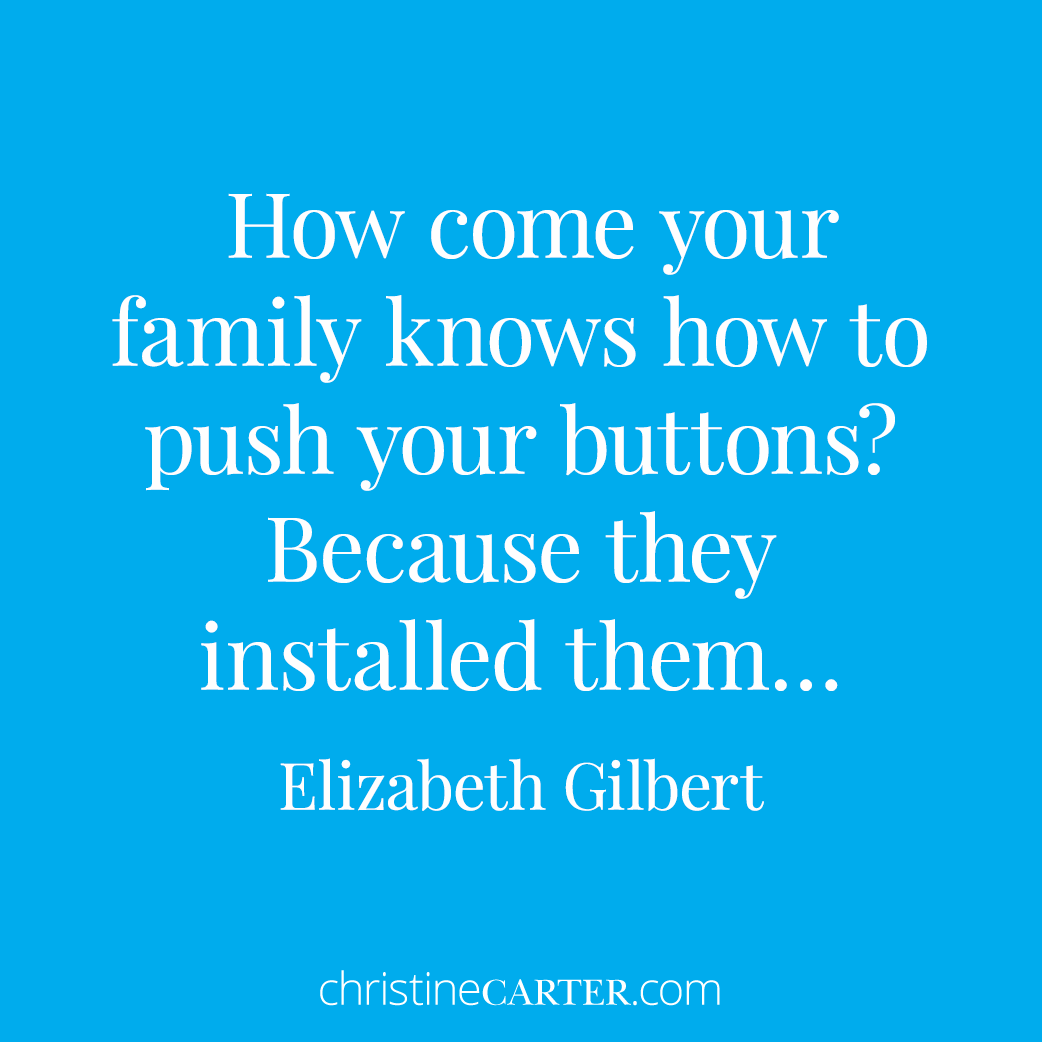
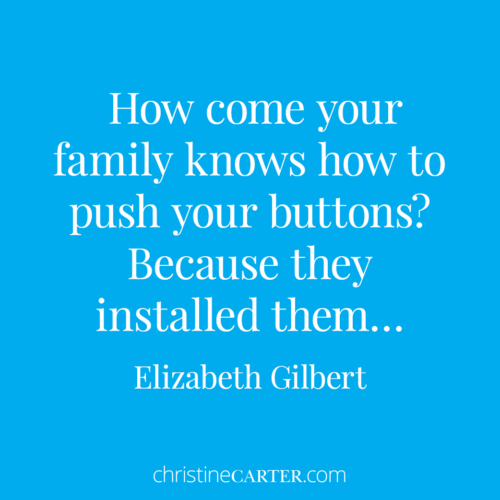
“How come your family knows how to push your buttons? Because they installed them…”
― Elizabeth Gilbert
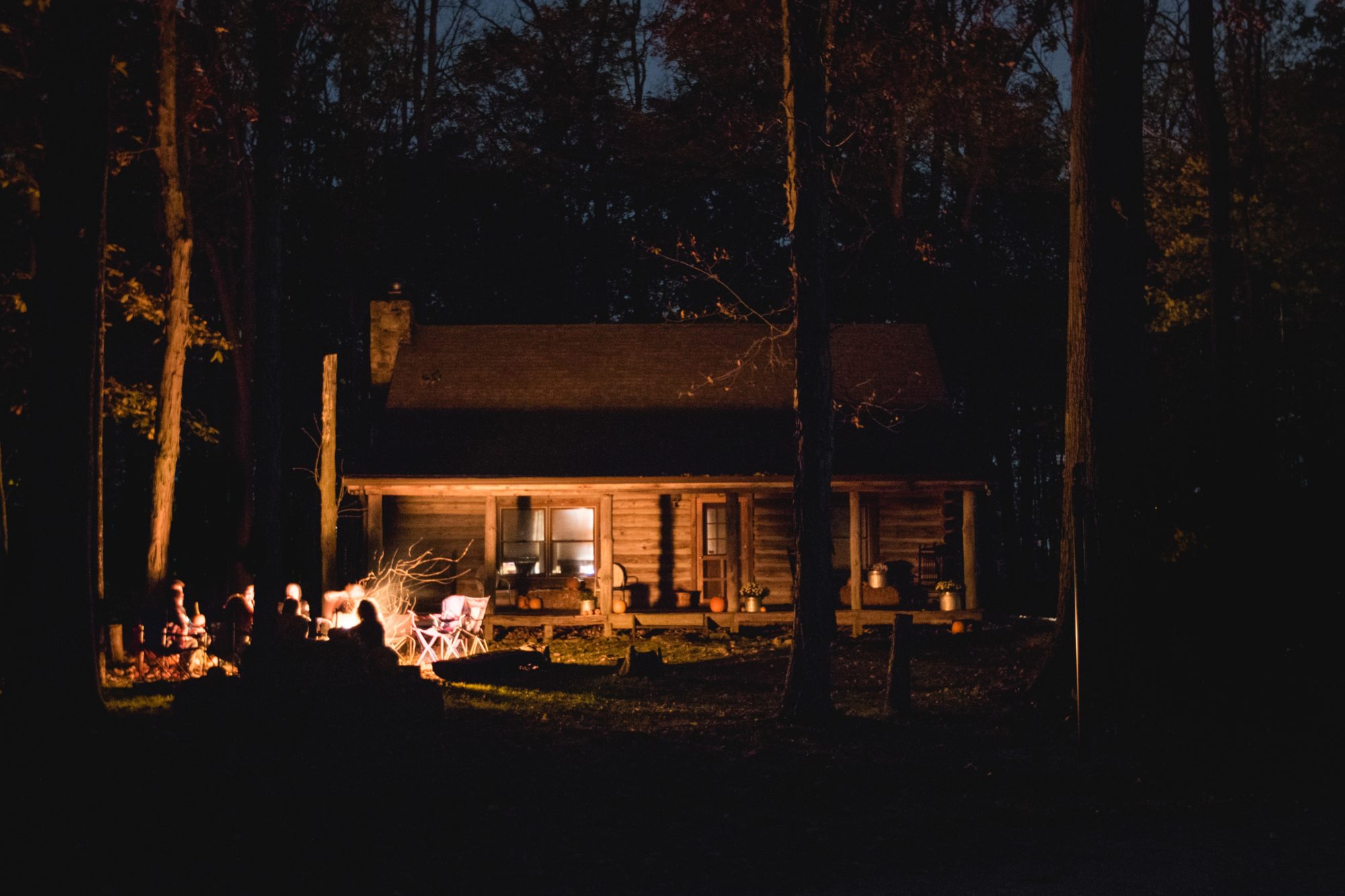
Like many families, ours followed this year’s midterm elections with passion. This will no doubt give us lots to talk about over the holidays and this week at Thanksgiving.
To be honest, this could stir considerable conflict. Our family is diverse: we are gay and straight; Black, white, and Latino; we are Fundamentalist Christian, Liberal Christian, Unitarian, Jewish, Buddhist, agnostic, and Atheist; we are Republicans, Democrats, and Independents; we come from suburban and urban communities. We will be 32 strong at our California Christmas dinner, with cousins, aunts, uncles and grandparents hailing from Florida, Washington, and Boston.
So even if politics are on all our minds, we can give political conversation a rest for one meal, because as a family we are not defined by our politics. I believe we are defined by how well we love each other, by how well we truly see one another. So this year, under each holiday plate, I will place one of the questions below, to spur the kind of conversation where we truly listen to one another, so we can get to know each other better. Even though I’ve known most of the people at the table since birth — or they’ve known me since I was born — we still have so much to learn about each other.
Conversations like the ones that ensue from these questions help kids experience themselves as a part of something larger than themselves. This, in turn, is likely to make them more resilient, better adjusted, and more successful in school (as I wrote about here). So here’s an extra challenge: See if you can get the adults to weave their answers to the questions below into a narrative demonstrating that your family members have been through both good and bad times together, but through it all, you’ve stuck together.
A printable copy of this list is here.
Many of these questions were adapted from the “Family Gathering” edition of Table Topics.
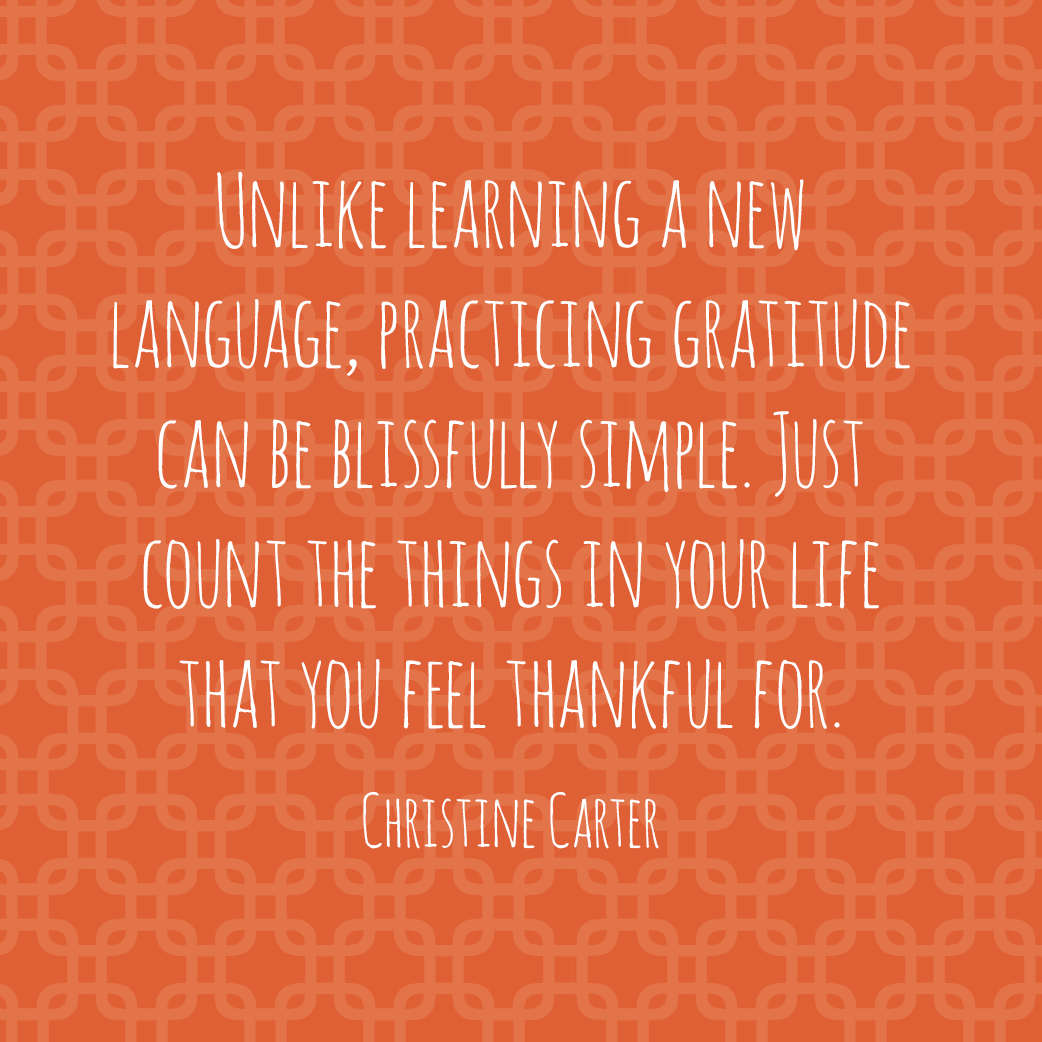
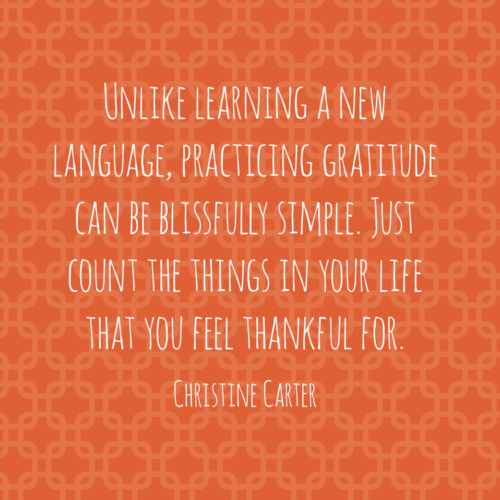
Unlike learning a new language, practicing gratitude can be blissfully simple. Just count the things in your life that you feel thankful for.
—Christine Carter, Making Gratitude Real
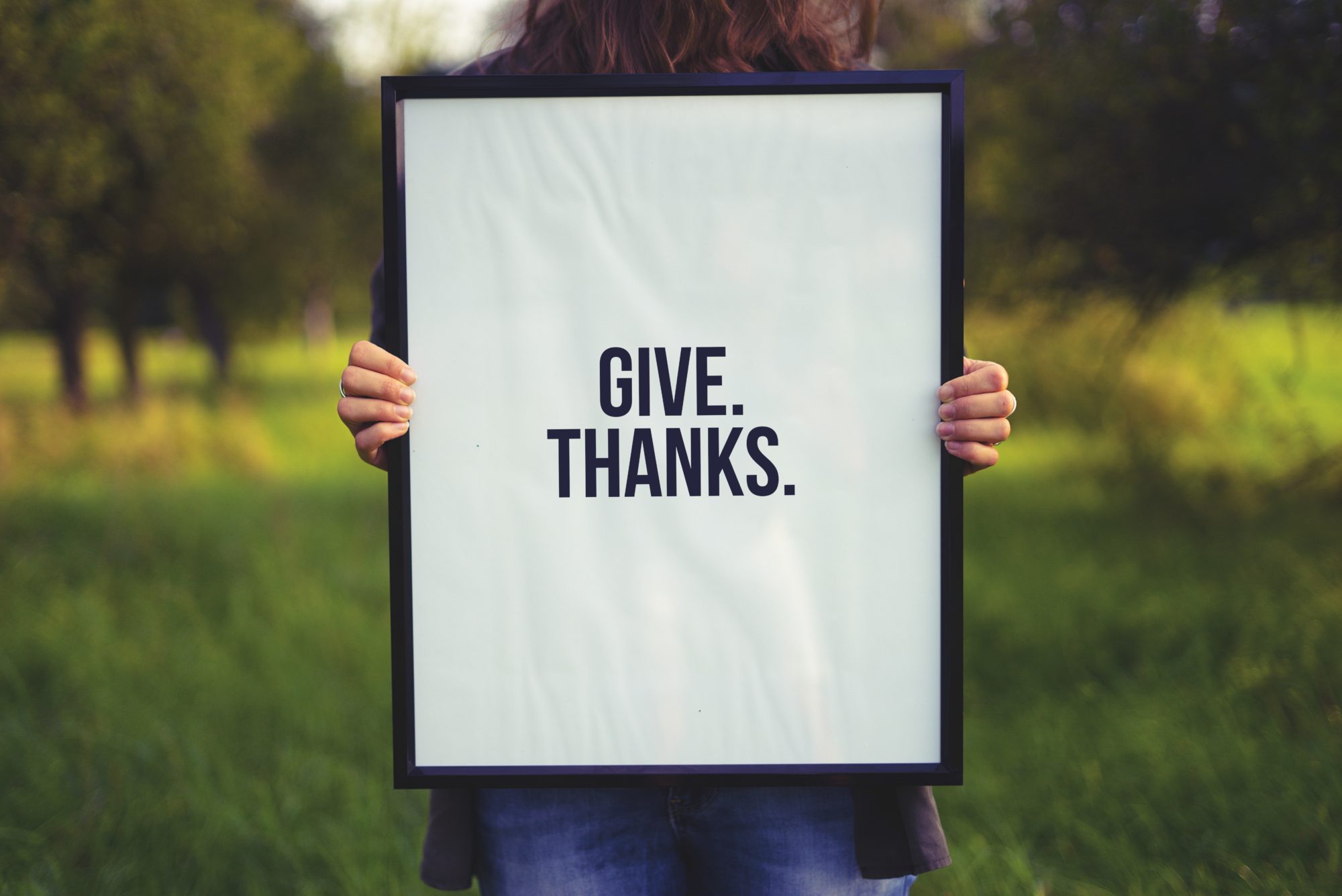
One of the most powerful positive emotions we have in this life is gratitude; mountains of research indicate that gratitude is part of the happiness holy grail. Compared with those who don’t practice gratitude, scientists have found that people who practice gratitude:
The key to creating gratitude practices that work is to add in an element of creativity and novelty. Think up a practice that you find fun and simple, and each time you practice, try to think of novel things that you are grateful for or new dimensions of those things and people you appreciate. Here are 5 of my favorite gratitude practices to get you started:
(Bet you didn’t see that one coming!) When researchers have people visualize their own death in detail, their gratitude increases. Similarly, simply imagining not having something you love can make you feel more grateful for it. When researchers had volunteers envision the sudden disappearance of their romantic partners from their lives, they felt a lot more gratitude for them. We also feel more gratitude when we imagine that positive life events never happened—like landing a new job or moving closer to family.
I know, depriving yourself doesn’t seem fun, but entitlement and adaptation undermine appreciation. Gratitude actually arises naturally in conditions of scarcity—for example, when we are hungry, we are more grateful for food than when we are full. Not surprisingly, research shows that we enjoy things more when we give them up for a little while; for example, people who gave up chocolate for seven days enjoyed it more at the end of the week than people who indulged all week. More surprisingly, people report enjoying their favorite TV shows more when they are interrupted occasionally (even by commercials). This is probably why Lent is a common religious practice!
Post a huge sheet of paper in a public place and ask everyone to contribute to it when the spirit moves them. Anything can go on the list, no matter how insignificant or important— people, places, stuff, events, nature. Variations on this theme are endless; try gratitude garlands, walls, trees— anything you can put a sticky note on or hang a tag on will work.

Start a tradition of writing “appreciations” on place cards at family dinners or on holidays. Depending on your comfort level for group sharing, make folded place cards for each person present, and then ask people to write a few adjectives that describe what they appreciate about one another on the inside of the place cards. Don’t ask people to write something about everyone present unless they want to—you don’t want to force the exercise. But do make sure that everyone has at least one thing written inside their place card so that during the meal you can go around the table and share appreciations.
Write letters for “large” and “small” gratitudes. Large: Write a thank-you letter to someone who is important to you but you haven’t properly thanked for something non-material, and then deliver it in person and read it out loud. Small: Text a quick and unexpected thank-you note for kind words spoken to someone who lent a helping hand, or to say thanks for a fun day.
This post is from a series about flourishing from the “Science of Finding Flow,” an online course I created as a companion to my book The Sweet Spot: How to Accomplish More by Doing Less. Want to go on to the next class or start the course from the beginning? It’s free! Just go to The Science of Finding Flow course page. Enjoy!
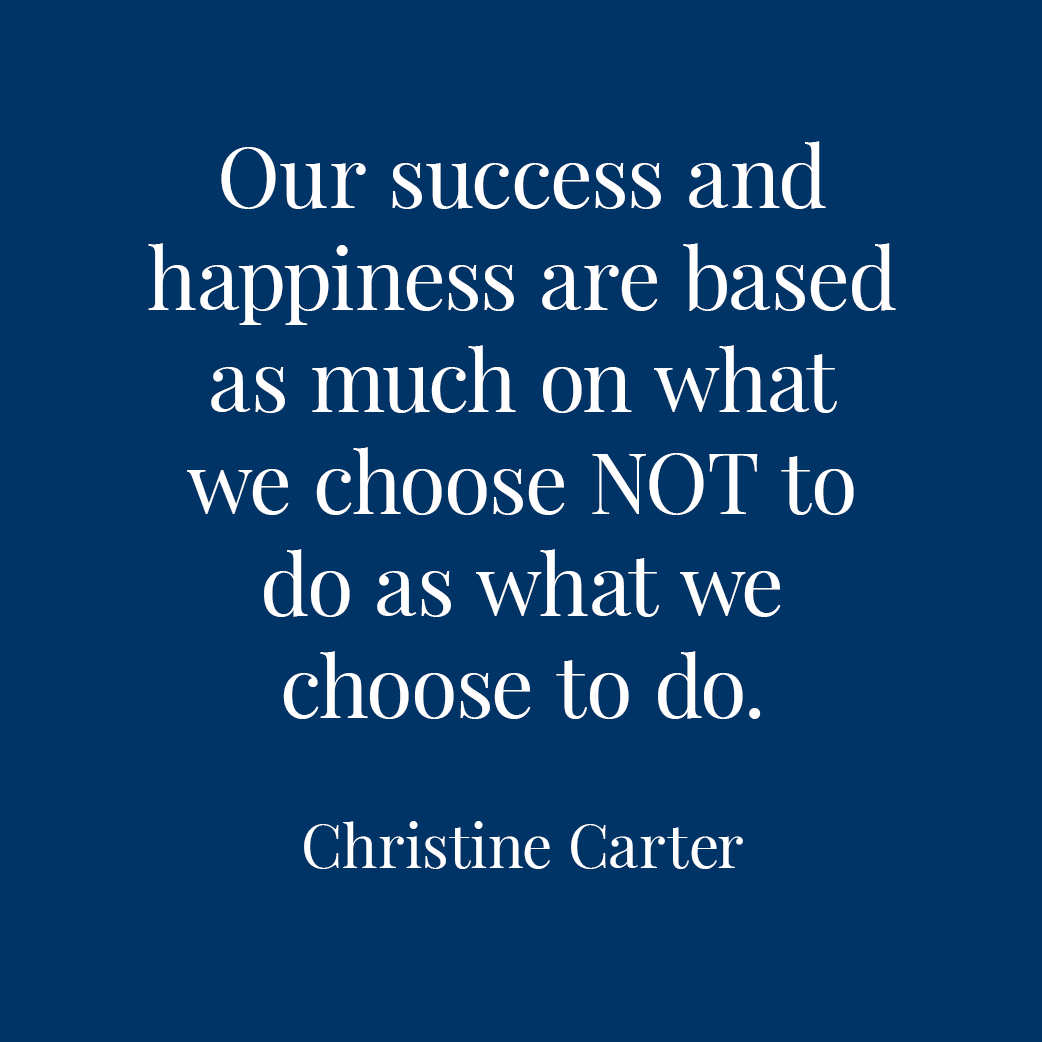
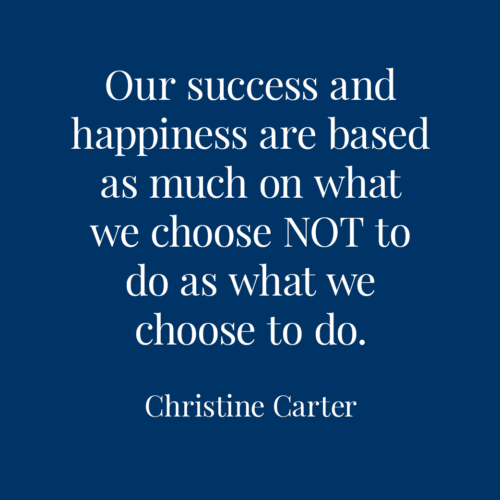
“Our success and happiness are based as much on what we choose NOT to do as what we choose to do.”
—Christine Carter

“Let others be consumed with the chase if they choose to, while you learn to relax. Rather than focusing outward, turn inward.”
—Wayne Dyer, paraphrasing Lao-tzu in the Tao Te Ching